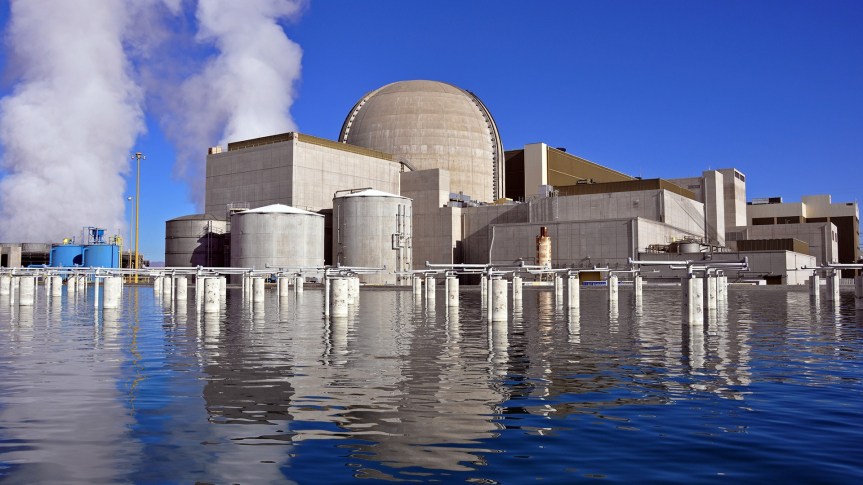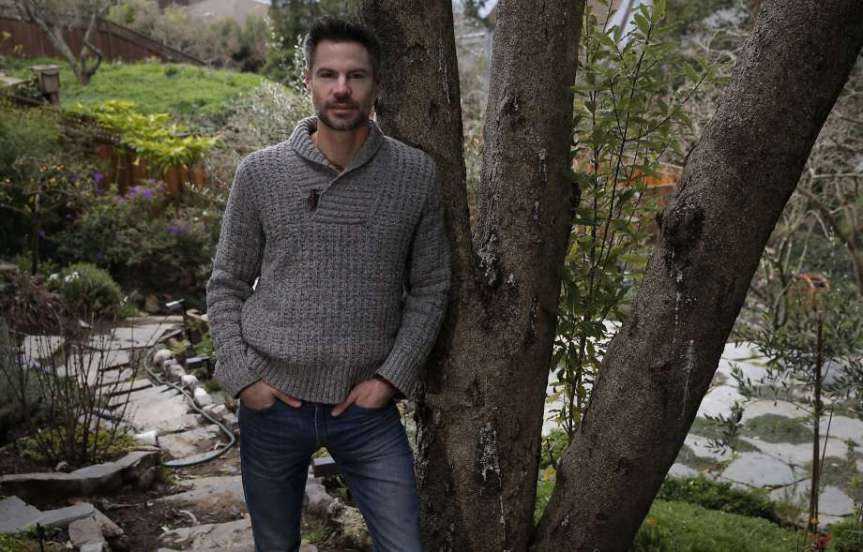Anyone talking about reducing carbon dioxide emissions and not talking about nuclear power, can’t be taken seriously.
Europe’s months-long wind drought in the last half of 2021 demonstrated the dangerous futility of attempting to rely on mother nature for your energy needs. Which is why the French, among others, are now talking about nuclear power as if it was their first true love. Macron made it crystal clear that France would invest heavily in their existing nuclear power plants and build 14 next-generation nuclear plants, adding to the 56 plants currently operating and providing the French with over 70% of their power needs, at a cost roughly half that being paid by their wind and solar ‘powered’ German neighbours.
Faced with the reality of actually trying to rely exclusively on wind and solar in the event that Vlad Putin cuts their supply of Russian gas, even Germany’s Greens are talking about maintaining their ability to produce coal-fired and nuclear power for the foreseeable future. No surprises, there.
And even wind and solar obsessed California is having second thoughts about killing off its nuclear power generation capacity, as James Freeman details below.
Is This Man Talking California Into Nuclear Power?
Wall Street Journal
James Freeman
29 April 2022
Journal readers know Michael Shellenberger for his long, grueling campaign to persuade fellow environmentalists to be reasonable. Now running as an independent for governor of California, he seems to be making some headway even in the country’s capital of climate nonsense.
Last year this column noted the encouraging world-wide movement toward nuclear power, a reliable zero-emission energy source that global warmists should love but often oppose. Mr. Shellenberger, who’s been proudly pro-nukes for years, wrote at the time on Substack:
National leaders around the world are announcing big plans to return to nuclear energy now that the cost of natural gas, coal, and petroleum are spiking, and weather-dependent renewables are failing to deliver.
Now it seems that Mr. Shellenberger’s entry into politics just might be encouraging even California Democrats to begin to finally acknowledge energy reality. Sammy Roth reports for the Los Angeles Times:
With the threat of power shortages looming… Gov. Gavin Newsom may attempt to delay the long-planned closure of California’s largest electricity source: the Diablo Canyon nuclear plant.
Newsom told the L.A. Times editorial board Thursday that the state would seek out a share of $6 billion in federal funds meant to rescue nuclear reactors facing closure, money the Biden administration announced this month. Diablo Canyon owner Pacific Gas & Electric is preparing to shutter the plant — which generated 6% of the state’s power last year — by 2025.
“The requirement is by May 19 to submit an application, or you miss the opportunity to draw down any federal funds if you want to extend the life of that plant,” Newsom said. “We would be remiss not to put that on the table as an option.”
He said state officials could decide later whether to pursue that option. And a spokesperson for the governor clarified that Newsom still wants to see the facility shut down long term. It’s been six years since PG&E agreed to close the plant near San Luis Obispo, rather than invest in expensive environmental and earthquake-safety upgrades.
Yes, it’s only a baby step, there are plenty of caveats, and perhaps Mr. Newsom is just another governor who instinctively lunges for federal funding. But Mr. Roth notes that the politics are moving in a positive direction after an era of antinuclear zealotry:
A recent UC Berkeley poll co-sponsored by The Times found that 44% of California voters support building more nuclear reactors in the Golden State, with 37% opposed and 19% undecided — a significant change from the 1980s and 1990s.
The poll also found that 39% of voters oppose shutting down Diablo Canyon, with 33% supporting closure and 28% unsure.
It turns out that many voters actually prefer to keep the lights on. Who would have guessed? Mr. Roth adds:
The governor said he’s been thinking about keeping Diablo open longer since August 2020, when California’s main electric grid operator was forced to implement rolling blackouts during an intense heat wave. Temperatures stayed high after sundown, leaving the state without enough electricity to keep air conditioners humming after solar farms stopped producing…
Newsom spokesperson Anthony York said the governor’s decision to reconsider Diablo Canyon’s closure timeline was driven by projections of possible power shortages in the next few years. Those projections, he said, came from the California Independent System Operator, which oversees the electric grid for most of the state.
Mr. Newsom told the Times that reliable electricity is “profoundly important.” Good call. Perhaps it has occurred to the governor that his constituents might need even more electricity in the future, given the burdens that Mr. Newsom and his fellow Democrats are busy placing on the state’s economy. The Journal’s Austen Hufford reported this week:
New state and municipal laws are driving a transition away from puttering, gas-powered lawn mowers and leaf blowers and toward battery-powered versions. California, the largest state by population, is set to ban the sale of most gas-powered lawn tools, starting with model year 2024 products…
Alan’s Lawnmower & Garden Center, a seller of tools for professional landscapers, is redoing showrooms at its two locations in Southern California to promote battery-powered equipment. When the process is done, about one-third of its floor space will be dedicated to electric models of equipment made by Stihl and other companies, said owner Paul Sullivan.
Mr. Sullivan said most of his customers will only switch because of the new rules.
“Nobody is happy about it, except the all-green battery manufacturers,” he said.
This expensive transformation of course goes way beyond landscaping. Russ Mitchell recently reported in the L.A. Times:
More than a third of new passenger cars and trucks sold in California in 2026 would have to be zero-emission vehicles under a new proposal from the California Air Resources Board.
To get there, electric cars would have to nearly triple last year’s market share of 13% in four years.
The 35% mandate would mark a major step toward the total ban on sales of new vehicles with internal combustion engines starting in 2035 under an order issued two years ago by Gov. Gavin Newsom. The EV mandate would hit 68% by 2030.
Will consumers go along? Interest in electric vehicles is on the rise, especially with gas prices that often top $6 a gallon.
But the air board, known as CARB, acknowledges that less expensive battery technology, more public charging stations and strong marketing campaigns will be necessary. Or, as the board put it in a report released Wednesday, “this consumer change will require continued improvements in electric vehicle technology, owner support and conveniences, as well as successful strategies to communicate the benefits to potential buyers.”
… A total-dollar taxpayer cost on the switch to EVs has not been put forth by CARB or by Newsom’s office. But new spending will be required.
Will it ever. Even an immediate, full embrace of nuclear energy by Mr. Newsom right now likely wouldn’t be enough to avert the pain of this transition. This column should also note that California’s forced march to electric vehicles will make those happy green-battery manufacturers very busy—maybe too busy.
The Journal’s Sean McLain and Scott Patterson recently reported:
Rivian Automotive Inc. Chief Executive RJ Scaringe is warning that the auto industry could soon face a shortage of battery supplies for electric vehicles—a challenge that he says could surpass the current computer-chip shortage.
Car companies are trying to lock up limited supplies of raw materials such as cobalt, lithium and nickel that are key to battery making, and many are constructing their own battery plants to put more battery-powered models in showrooms.
“Put very simply, all the world’s cell production combined represents well under 10% of what we will need in 10 years,” Mr. Scaringe said last week, while giving reporters a tour of the company’s plant in Normal, Ill. “Meaning, 90% to 95% of the supply chain does not exist,” he added.
Let’s hope that this election season brings more discussion on the best ways to enable reliable, affordable energy for people in California and across the country. And if Gov. Newsom is ready to consider new ideas for the Golden State, perhaps he’ll want to ponder the words co-authored by Mr. Shellenberger and quoted in the Journal in 2013:
Once upon a time, social justice was synonymous with equal access to modern amenities—electric lighting so poor children could read at night, refrigerators so milk could be kept on hand, and washing machines to save the hands and backs of women…
Now, at the very moment modern energy arrives for global poor—something a prior generation of socialists would have celebrated and, indeed, demanded—today’s leading left-wing leaders advocate a return to energy penury.



Please see my position paper on “Carbon Free Nuclear Energy” https://www.ascf.us/news/carbon-free-nuclear-energy–by-laurence-f-sanford/ Thank you
Decades ago, somebody asked a French politician why they embraced nuclear power. He said “We have no coal. He have no oil. We have no gas. We have no choice.
Gov. Gruesome, AKA Gov. Hairdo, always his wetted finger in the wind.
Also decades ago, one of my college chums told me “Electric card don’t reduce smog in LA. They just export it to the Grand Canyon” — downwind from the Four Corners coal-fired power plants.
There are 52 nuclear power plants under construction. 14 of them (or is it 17?) are in China (also one GWe coal capacity per week). One is in the United States, and activists want to prevent its start-up. Building it bankrupted Westinghouse. Was that caused by burdensome regulations, forgetting how to build them, or union sabotage?
After 40 years of trying, the massive fraud and green lies about wind energy powering the future are coming to an end. By using real math that includes all base-load energy and transmission losses, CA’s fleet of turbines might be producing a pitiful net of only 2% for the grid.
Currently California is using nuclear power generated from Arizona, but our Faux green state doesn’t like to broadcast this reality. Instead California is using Green’s energy’s fraudulent math and omissions to lie to the public.
In the near future, California’s growing energy needs will have to include more nuclear power and lots of it for electric cars. The Green math hucksters won’t disclose this, but with each new electric car purchased, wind power’s almost worthless contribution to the grid just keeps on plummeting.